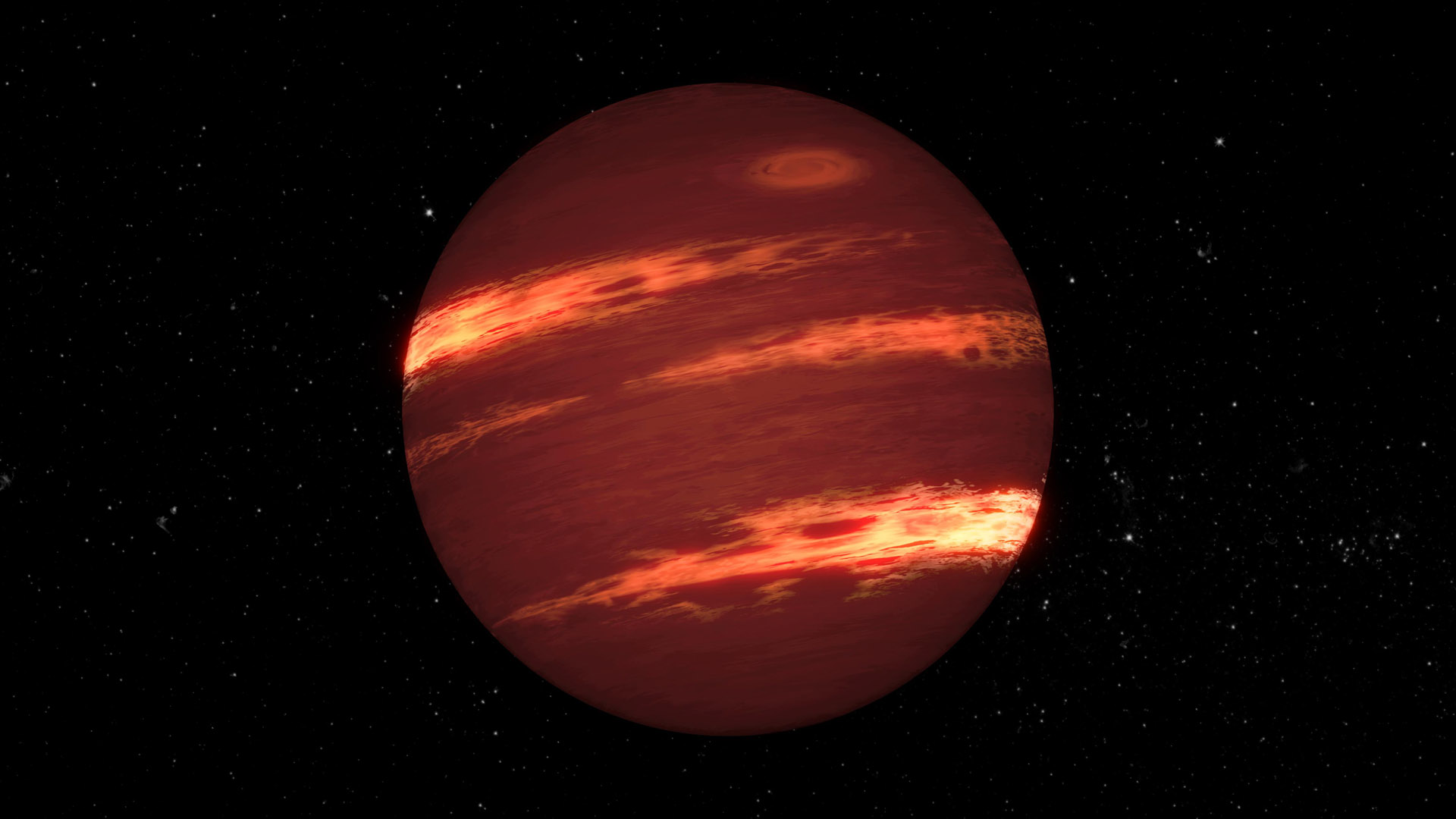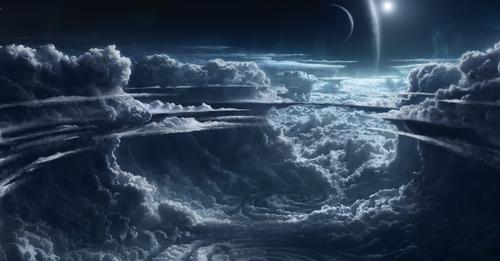A mysterious alien world covered in clouds of silicate grains that resemble sand has been discovered by the James Webb Space Telescope.
The exoplanet discovery, described in a new paper as the first detection of its kind, was made by the James Webb Space Telescope’s NIRSpec and MIRI instruments. In the data, astronomers spotted evidence of silicate-rich clouds around a brown dwarf nearly 20 times the size of Jupiter. The finding confirms some earlier theories about these odd planet-like worlds.

Astronomers have long speculated that some types of brown dwarfs are wrapped in turbulent, fast-changing atmospheres. (Image credit: NASA/JPL-Caltech)
Brown dwarfs are strange objects that are not quite big enough to ignite into stars but a little too big for ordinary planets. While brown dwarfs can’t burn regular hydrogen, they can produce their own light and heat by burning deuterium (a less common isotope of hydrogen that contains an extra neutron).
VHS 1256 b is a brown dwarf that orbits two tiny red dwarf stars 72 light-years from Earth in the constellation Corvus, or the Crow, in the southern sky. Astronomers spotted the odd exoplanet in 2016, and its reddish glow has perplexed them ever since. They suspected that the glow was created by some kind of atmosphere. According to Forbes, observations from the James Webb Space Telescope have now corroborated those predictions, demonstrating that VHS 1256 b must be surrounded in dense clouds filled of sand-like silicate grains.
Water, methane, carbon monoxide, carbon dioxide, sodium, and potassium were also found in the atmosphere of VHS 1256 b by Webb.

“We will know more from iterations on the data reduction,” Brittany Miles, an astronomer at the University of California, Irvine, and lead researcher on the project, told Space.com in an email. “So far, it looks pretty similar to theoretical expectations.”
The Webb data were so thorough that they revealed that the ratio of the various gases changes throughout the atmosphere of VHS 1256 b, implying that the atmosphere is not static, but rather chaotic and turbulent.
“In a calm atmosphere, there is an expected ratio of, say, methane and carbon monoxide,” Sasha Hinkley, an astronomer at the University of Exeter in the U.K. and one of the study’s co-authors, told Forbes. “But in many exoplanet atmospheres we’re finding that this ratio is very skewed, suggesting that there is turbulent vertical mixing in these atmospheres, dredging up carbon dioxide from deep down to mix with the methane higher up in the atmosphere.”
VHS 1256 b is small for a brown dwarf, suggesting that the body is young. The exoplanet orbits its two parent stars 360 sun-Earth distances apart in an oval-shaped orbit that takes 17,000 years to complete.
Source: https://news.sci-nature.com








